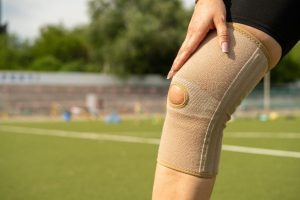If you’ve never had physical therapy before, there’s a chance you’ve heard some conflicting information about how physical therapy works. This is due, in part, to variances between individuals through their course of treatment.
Physical therapy works by employing a combination of tailored exercises, hands-on techniques, and patient education to improve mobility, alleviate pain, and enhance function. Through personalized treatment plans and ongoing monitoring, physical therapists empower individuals to take an active role in their recovery.
In this article, we’ll discuss how physical therapy typically works for the average patient so you know what to expect.
How physical therapy works
At its core, physical therapy utilizes a combination of exercise, manual therapy techniques, education, and specialized modalities to address a wide range of musculoskeletal and neurological issues.
The primary goal is to restore or enhance mobility, strength, flexibility, balance, and coordination while reducing pain and preventing further injury.
Here are the steps we take to ensure a productive course of treatment for every patient we meet:
Step 1: Assessment and evaluation
Each course of physical therapy treatment typically begins with a comprehensive assessment conducted by a licensed physical therapist.
During this initial physical therapy evaluation, the therapist will gather information about your medical history, current symptoms, functional limitations, and personal goals. They may also perform various tests and measurements to evaluate your strength, range of motion, posture, and overall mobility.
Step 2: Developing a personalized treatment plan
Based on the assessment findings, the physical therapist will design a personalized treatment plan tailored to your specific needs and goals.
This plan may include a variety of interventions, such as therapeutic exercises, manual therapy techniques (such as joint mobilization or soft tissue mobilization), functional training, and patient education.
Step 3: Regular physical therapy appointments
From there, your therapist will suggest a visit frequency which typically involves two to three appointments per week. This allows for effective rest days between physical therapy appointments and provides the necessary stimulus to improve strength and mobility multiple times through the week.
Generally, the recommendation will be for four to six weeks, depending on the severity of your condition and any orders from your primary care provider.
Step 4: The home exercise program
As you finish your first appointment (initial evaluation), you will be presented by your therapist with a series of exercises and stretches to perform at home. The therapist will often provide you with any equipment needed and thorough instructions on how to complete the exercises.
We often mention to patients that this is one of the most integral elements of physical therapy. Patients who understand the importance of their home exercise programs often recover faster and more completely than those who don’t.
As an aside, one of the primary benefits of physical therapy is that the home exercise program can be continued on your own for months or years to come, as long as it’s providing you with positive results!
Step 5: Monitoring progress and adjusting the plan
Throughout the course of therapy, your progress will be closely monitored, and you are free to provide feedback after physical therapy sessions or whenever you wish. The physical therapist will then be adjust your treatment plan may be adjusted accordingly.
These adjustments can include basic alterations to the load and variety of exercises, or they may add or remove a modality from your treatment plan. Additionally, the physical therapist will sometimes alter the frequency of your visits if you’re becoming more independent or are nearing a visit limit for your insurance.
Primary elements of a physical therapy treatment plan
We mentioned above that the treatment plan would include multiple “modalities.” What we mean by that is that there are various types of treatment that you’ll engage in through your therapy sessions. Though settings vary, these common elements should remain the same regardless of whether you’re doing outpatient or home health physical therapy.
Some of the most common modalities include:
Therapeutic exercise
Exercise is a cornerstone of physical therapy, as it helps to strengthen muscles, improve flexibility, and promote overall fitness. All physical therapy treatment plans should include some type of therapeutic exercise.
Your therapist will prescribe specific exercises targeting areas of weakness or dysfunction, which you’ll perform both in the clinic and at home.
These exercises may range from simple stretches and strengthening exercises to more complex functional movements designed to mimic activities of daily living.
Manual therapy techniques
In addition to exercise, physical therapists may use manual therapy techniques to address musculoskeletal issues and promote healing. These are hands-on techniques performed directly by the physical therapist or a physical therapy assistant.
They can include joint mobilization, soft tissue mobilization, massage, stretching, and manipulation. By applying precise pressure and movements, therapists can help restore normal joint mechanics, reduce muscle tension, and alleviate pain.
Functional training
Functional training focuses on improving your ability to perform everyday tasks and activities with greater ease and efficiency. This may involve practicing specific movements or tasks relevant to your daily life, such as getting in and out of bed, walking, climbing stairs, or lifting objects safely.
By incorporating functional training into your therapy program, you’ll not only improve your physical abilities but also enhance your independence and confidence.
Patient education
Education plays a particularly critical role in physical therapy, as this is how we empowering patients to take an active role in their recovery and long-term health. A good physical therapist will provide valuable information about your condition, proper body mechanics, injury prevention strategies, and self-care techniques, whereas a bad physical therapist may leave you in the dark as to the rationale for their various decisions.
By understanding your body and how to care for it, you’ll be better equipped to manage your symptoms and prevent future issues.
How long does physical therapy take to work
We understand that committing to a course of physical therapy is a bigger time commitment than simply visiting a doctor once or twice. For physical therapy to work, you’ll be keeping regular appointments two to three times per week, which can be a big time commitment for many people.
In general, we find that patients often report relief and initial results after just a few weeks. However, just like any exercise program, 2-3 months is a big turning point for people. We recommend that if you decide to seek physical therapy as an option, you commit to 2-3 months of keeping appointments before going in another direction or concluding that physical therapy doesn’t work.
Of course, if you feel that the course of treatment isn’t going well, you’re welcome to bring that up to us at any time – you don’t have to wait! As mentioned above, we’ll gladly make adjustments to your program to accommodate for your concerns.

















